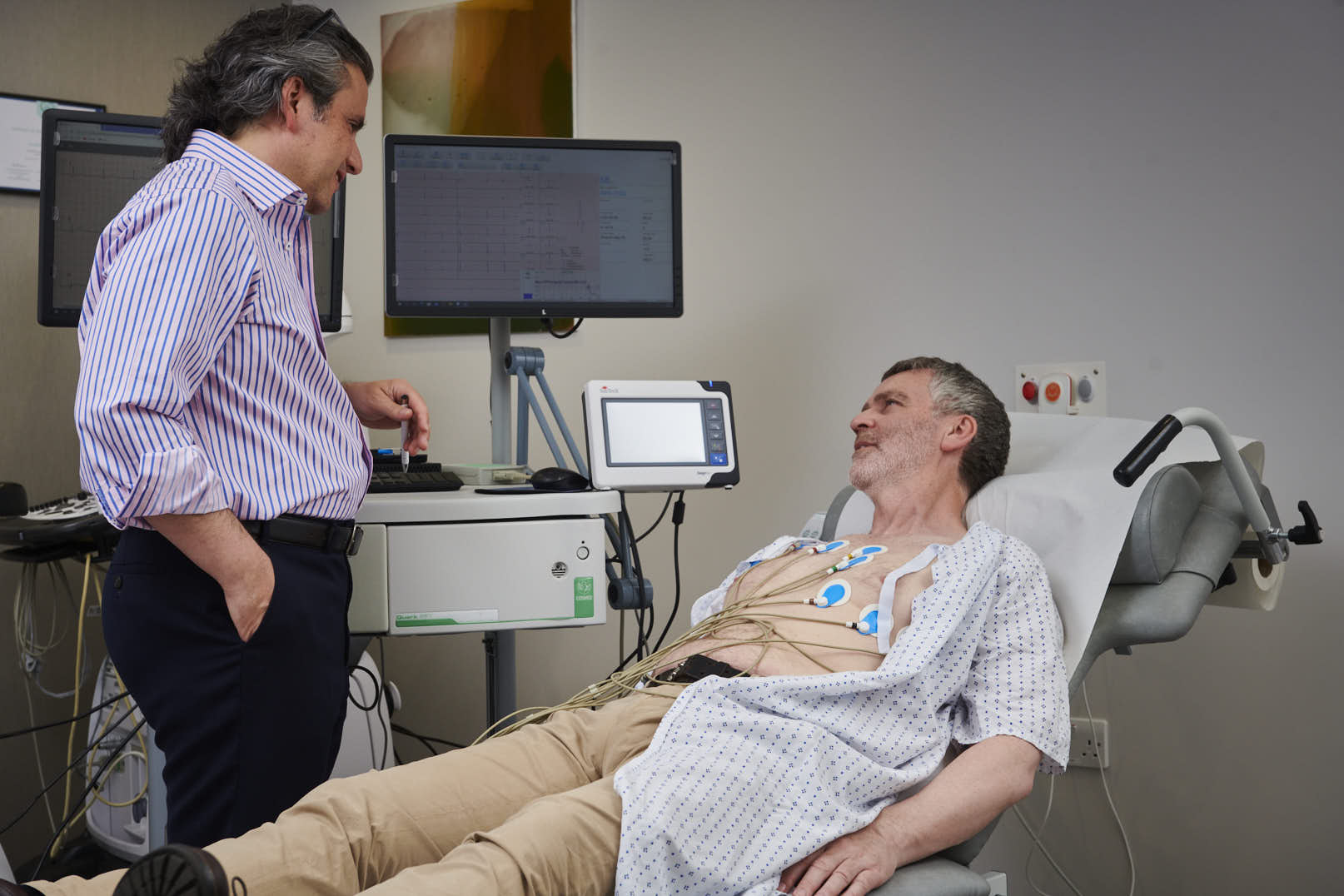Coronary angioplasty (PCI) is a procedure used to widen a blocked or narrow coronary artery, the main vessels that supply blood to the heart.
A catheter is taken from the wrist or groin up to the heart. A wire is steered across the blockage in the coronary artery. A balloon is used to stretch open the narrowed or blocked artery. Usually, a short wire-mesh (stent) is placed into the artery during the procedure. The stent is permanently left in place to allow blood to continuously move more freely.
What happens during a Coronary Angioplasty?
You will be given a local anaesthetic before your procedure, meaning you’ll be awake for the duration.
A catheter will be inserted into your groin, wrist or arm and fed up through one of your arteries to your heart. The position of the catheter will be constantly monitored by X-Ray.
When the catheter is in place, a thin wire will be fed through the catheter and into the affected section of the artery carrying a small balloon. The balloon is inflated to widen the artery, squashing fatty deposits against the artery wall so blood can flow through freely again. Usually a stent is left as a scaffold to keep the artery open. The stent is covered in medication to help reduce re-narrowing (Drug Eluting Stent or DES) before the balloon, wire and catheter are removed.
This procedure usually takes between 30 minutes to 2 hours to complete.
If done from the wrist, you may go home the same day. You will need Aspirin and another agent (Clopidogrel or Ticagrelor) for one year after your procedure.




